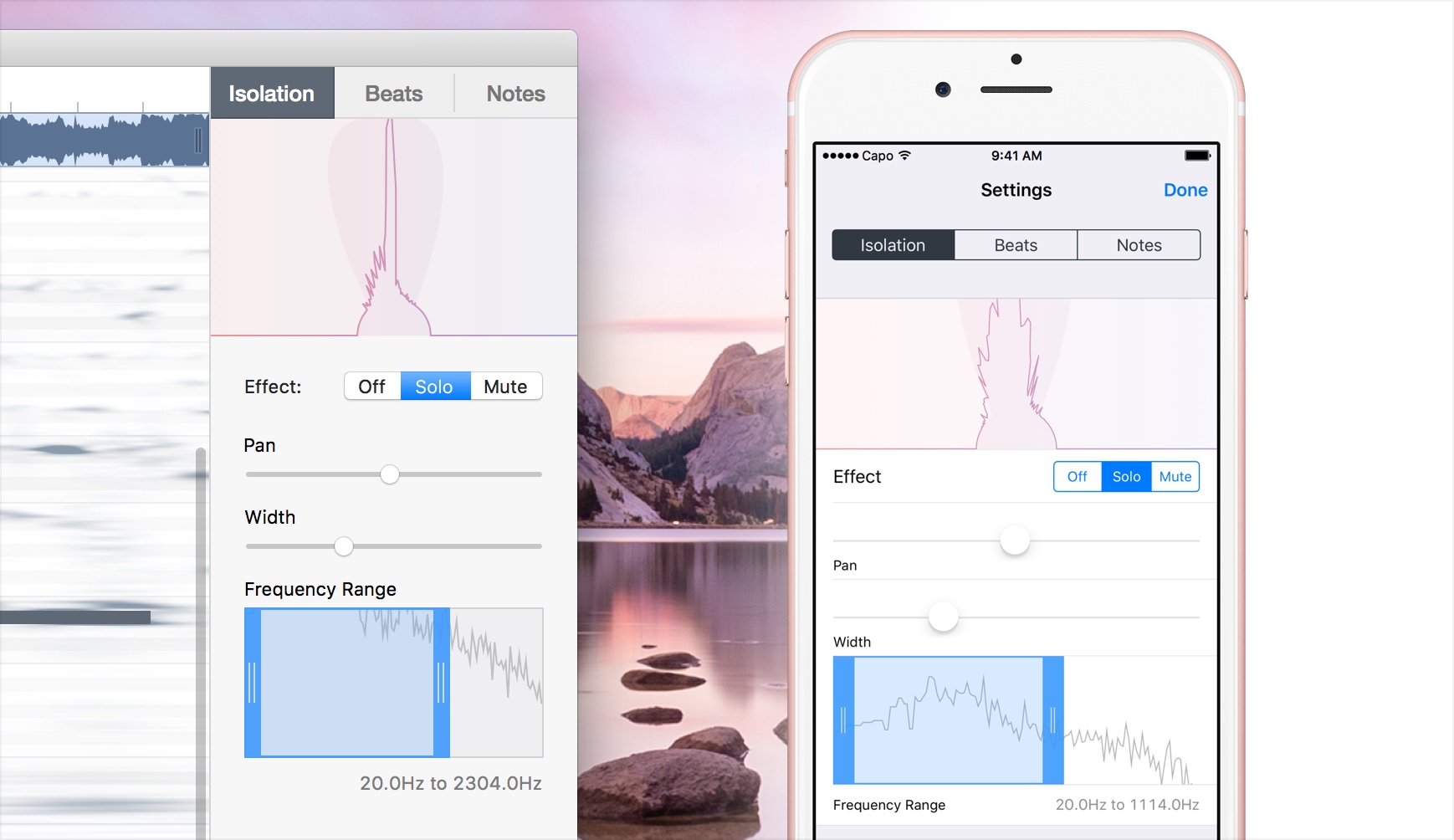Capo 3.4 and Capo touch 2.3 now include an all-new isolation effect that replaces the old Mono, EQ, and Vocal Reduction effects. While they’re gone, you can still do everything that the old effects did!

If you want to re-position the right channel, repeate the above steps with the pan slider set to the right.
The frequency range control acts similarly to the equalizer when the Effect switch is set to “Solo”, but it provides far more precise control over the range you’re looking to isolate.
Below are a few instrument-specific tips to help you get started.
The bass and drums are commonly mixed to the center to provide more impact, but because the vocals also occupy the center you will have to use the frequency range slider to help you narrow in on the bottom end.
If you’re finding that the target sound is “all over the place” in the mix, then you might want to try a reversed approach. Attempt to eliminate the stuff panned in the center, as with the vocal reduction steps above. Sometimes that’s the only way you’ll get a clear sound of the non-centered instruments.
First of all, isolation only works with stereo songs. You can tell whether isolation is being run on a mono track if the pan energy display is showing a thin, straight line in the middle and nothing else. These are rare nowadays, but it’s worth mentioning.
Second, your success is highly dependent on how the music was mixed. If the instrument you are chasing was mixed closely to another one in the stereo field with the same frequencies then you’ll have a lot of trouble. For example, if the vocals and an acoustic guitar were both mixed equally to the center, then there isn’t much hope in separating the two.
With that said, you can still get some benefit from using the frequency range control to prevent the bass or percussion instruments from leaking in.
In modern music, quite a lot of the energy gets smashed right up near the center of the mix, so it can take a little bit more time to dial in the sound you’re after. Still, if you ever get stuck in these cases, you can get very far by eliminating the vocals, bass, and drums right in the center of the mix to hear all the instruments more clearly.
We recommend that you find some older recordings to practice with, since they often mixed with far less complexity. Instruments were often segregated clearly with different pan positions, and often times a guitar or piano would be placed very prominently in either the left or right channel.
Also, live recordings are a great source of material to test isolation with. Generally these recordings are mixed to preserve the positioning of the players on stage, and hence you will find the energy is distributed more evenly across the stereo field.